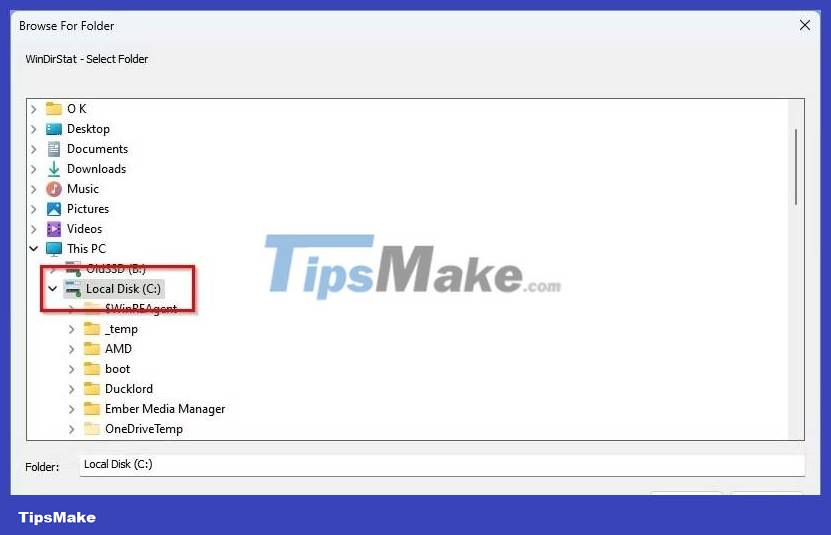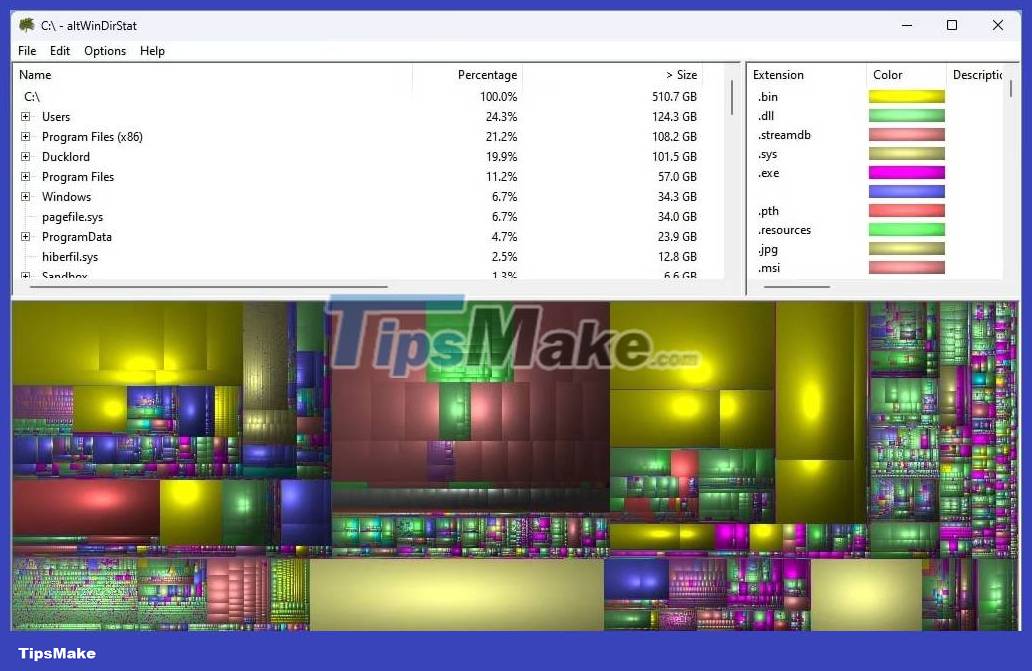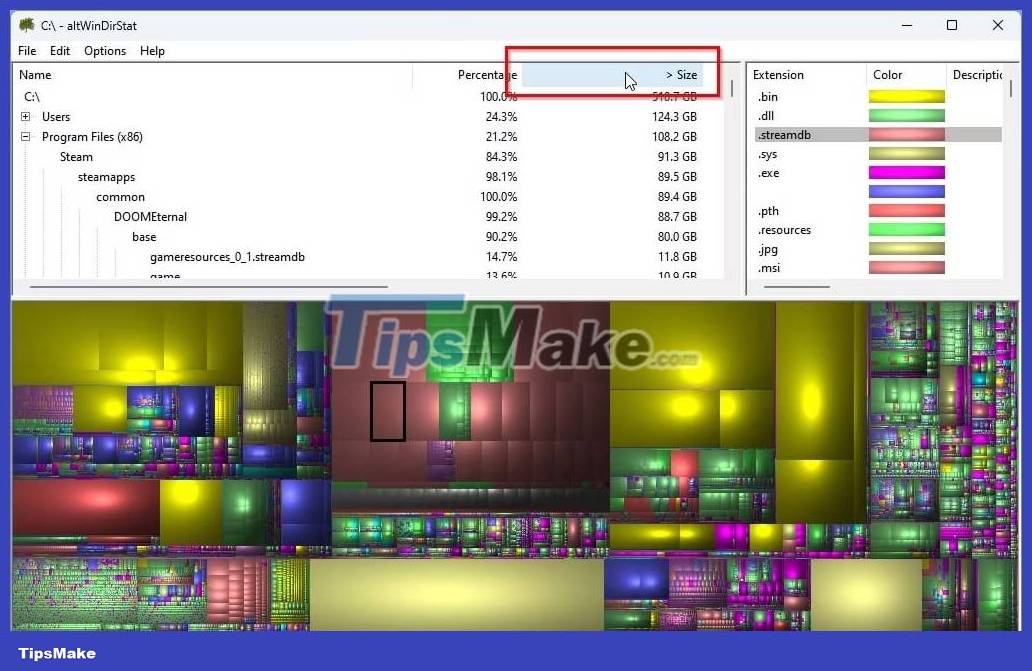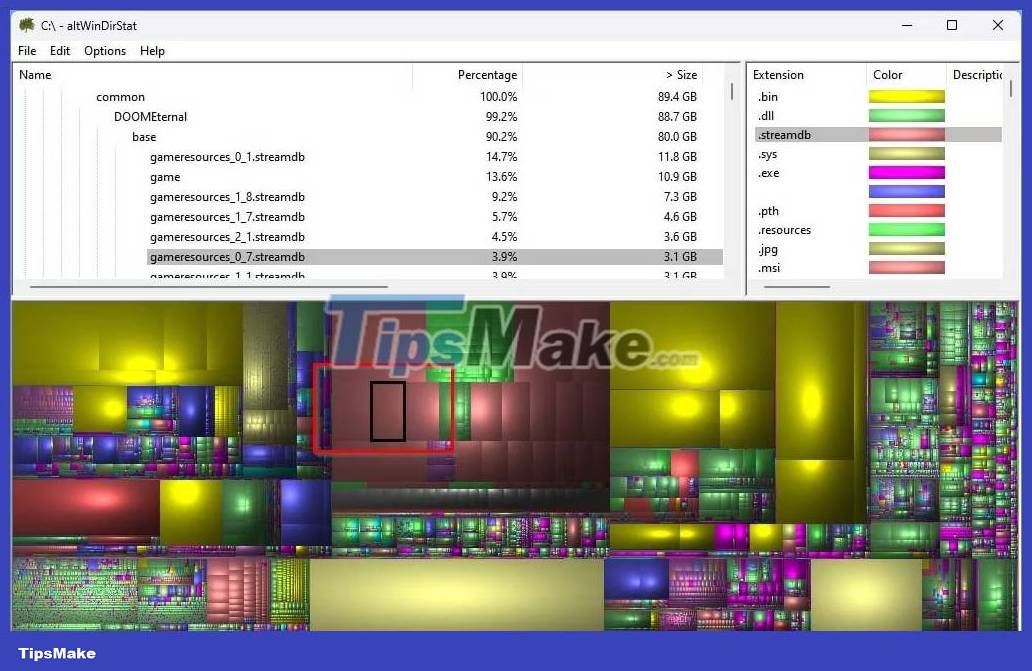How to visualize and reclaim memory on Windows with altWinDirStat
Almost identical to "vanilla" WinDirStat, altWinDirStat achieves much higher speed when analyzing your memory. Let's see how you can use it to locate large files that are taking up your precious storage space.
How to download and install altWinDirStat
Start by visiting the altWinDirStat page on GitHub. Click Releases on the right.
Scroll down to find the Assets section of the latest entry (at the top of the page). Expand it and download the version suitable for your PC architecture and operating system.
Most people should stick with the 64-bit "release" version , unless using an older PC that only supports 32-bit applications. Ignore "debug" versions and source code.
Since altWinDirStat does not require installation, save the downloaded file directly to the folder where you want to run it in the future. That also means that if you save a file to a USB, you can use it as a portable application on any PC.
How is altWinDirStat different from the original WinDirStat?
If you are familiar with the original WinDirStat, when you run altWinDirStat you will notice that the two applications look almost identical. Unlike the previous 4 best alternatives to WinDirStat, altWinDirStat is a "fork", a modified copy of the original WinDirStat.
Instead of expanding on the original or adding more features, altWinDirStat goes in the opposite direction: It's a "streamlined" version of the original application, retaining only the function of analyzing how many files "take up" space. quality and present results in a user-friendly manner.
Note : The original WinDirStat is updated more frequently than altWinDirStat. However, despite all its improvements, WinDirStat is still slower than the heavily optimized altWinDirStat.
What makes altWinDirStat a better choice?
The main "secret" ingredient of altWinDirStat that makes it work so fast is its ability to directly scan the storage device's MFT instead of "crawling" through all files and folders. MFT is a special part of the file system management system in which the operating system keeps an index of everything on the storage device.
However, for altWinDirStat to access the MFT, you will have to launch it with elevated privileges. So, right-click on the application's executable file and select you want to Run as administrator .

For best speed when using MFT, start scanning from the storage device's root folder (by "selecting their letters" instead of any folders inside them). Then, click OK to let altWinDirStat scan the selected folder.

altWinDirStat takes just a few seconds to analyze your memory and present the results.

How to navigate altWinDirStat's directory view
The classic way to locate the files that take up most of your storage with altWinDirStat is through the application's "navigation tree" in the top half of the window.
You can freely scroll through all the entries to locate the largest files yourself. However, it's easier to click on the Size column to sort the list below by that characteristic.

If the list shows the smallest files at the top, click the Size column again to reverse its arrangement.
How to use altWinDirStat's treemap
What many similar applications "borrow" from WinDirStat is the visual representation of file size. altWinDirStat is no exception.
The bottom of the window displays this visualization, with differently sized rectangles representing each file in the storage device being analyzed. The more space a file takes up from memory, the larger the rectangle representing the file becomes.
This allows you to locate the largest files with just a glance. However, altWinDirStat's graph only shows rectangles without additional information. You can point at a rectangle and altWinDirStat will display the full path of the file it represents at the bottom of the window, on its "status line".

Alternatively, you can click on any rectangle to select it. altWinDirStat will also update the tree list view at the top of the window, selecting the file "behind" the rectangle you clicked on.
Tips and tricks for using altWinDirStat
By right-clicking on a large file, you can delete it without exiting altWinDirStat. However, during tests, this option was disabled.
So, after locating the files you want to delete to reclaim storage space, you'll have to do the actual deletion from another application, like Windows File Explorer or one of the better alternatives to File. Explorer that TipsMake mentioned before.
However, you don't need to manually navigate to the file's location: Click the file on altWinDirStat's tree or graph view and press CTRL + C or right-click and select Copy path . You can then paste that path into the path field of your favorite file manager to find your files instantly.
You should read it
- How to determine if computer memory has a problem?
- How to Format a Memory Card Using a Windows Computer
- How does ROM memory work?
- How to manage Pagefile virtual memory in Windows 10
- What is Memory Compression in Windows?
- 'Remember your face and forget your name', remedy and method for practicing super memory
 3 Ways to unlock a locked computer without a password
3 Ways to unlock a locked computer without a password 4 ways to return to the previous version of Windows 10 without losing data
4 ways to return to the previous version of Windows 10 without losing data How to backup computer to external hard drive? (Windows and Mac)
How to backup computer to external hard drive? (Windows and Mac) How to change fonts in Windows 11
How to change fonts in Windows 11 Instructions on how to scan QR codes on Windows 10 computers
Instructions on how to scan QR codes on Windows 10 computers How to format and format a hard drive on a Windows computer
How to format and format a hard drive on a Windows computer